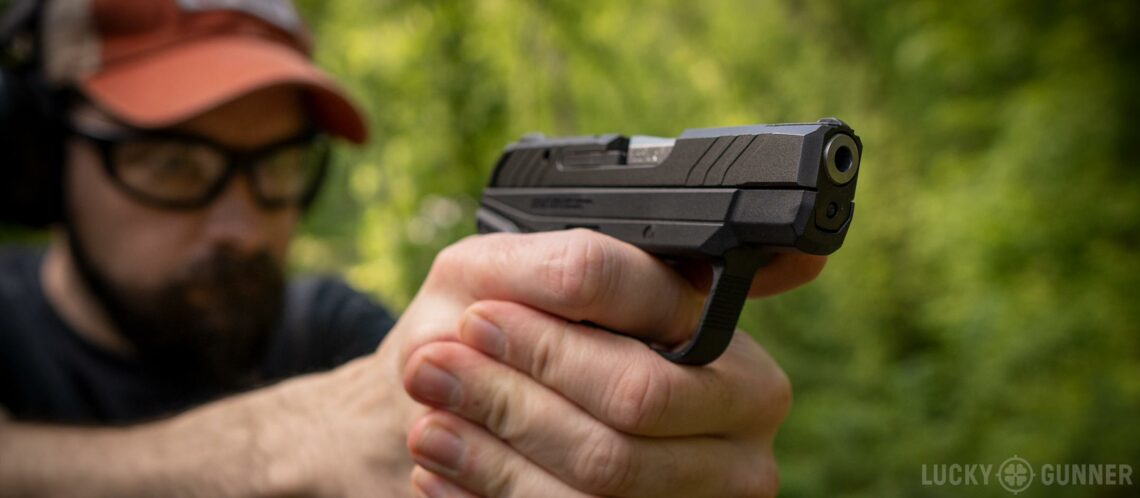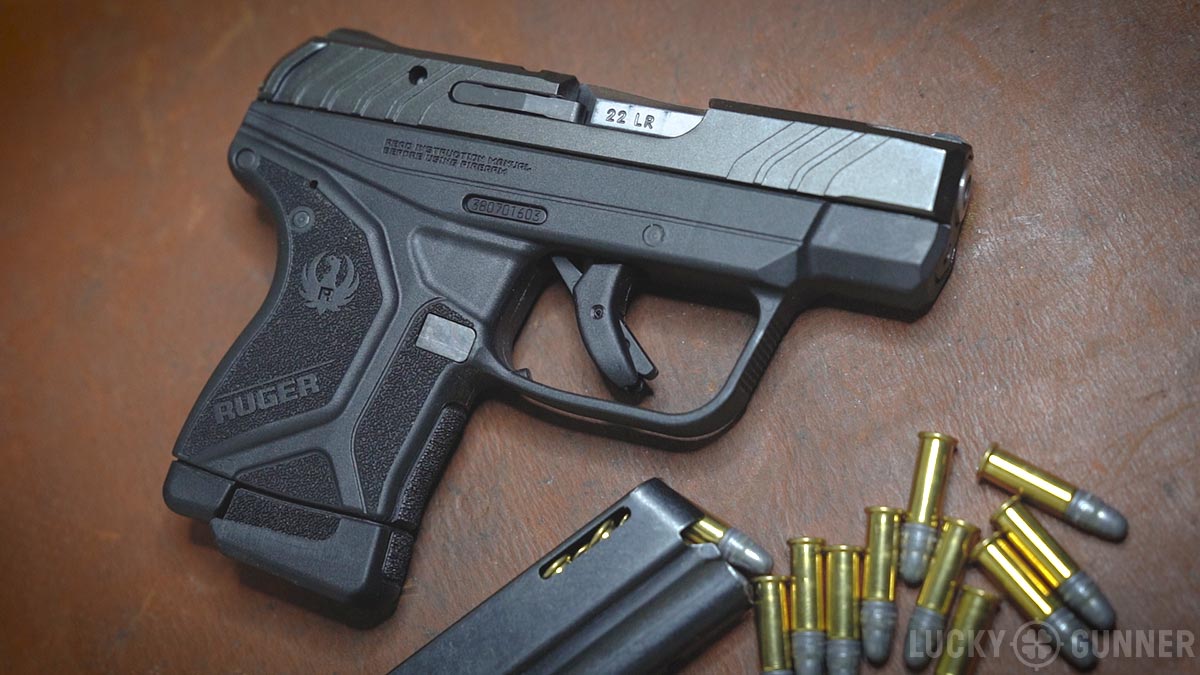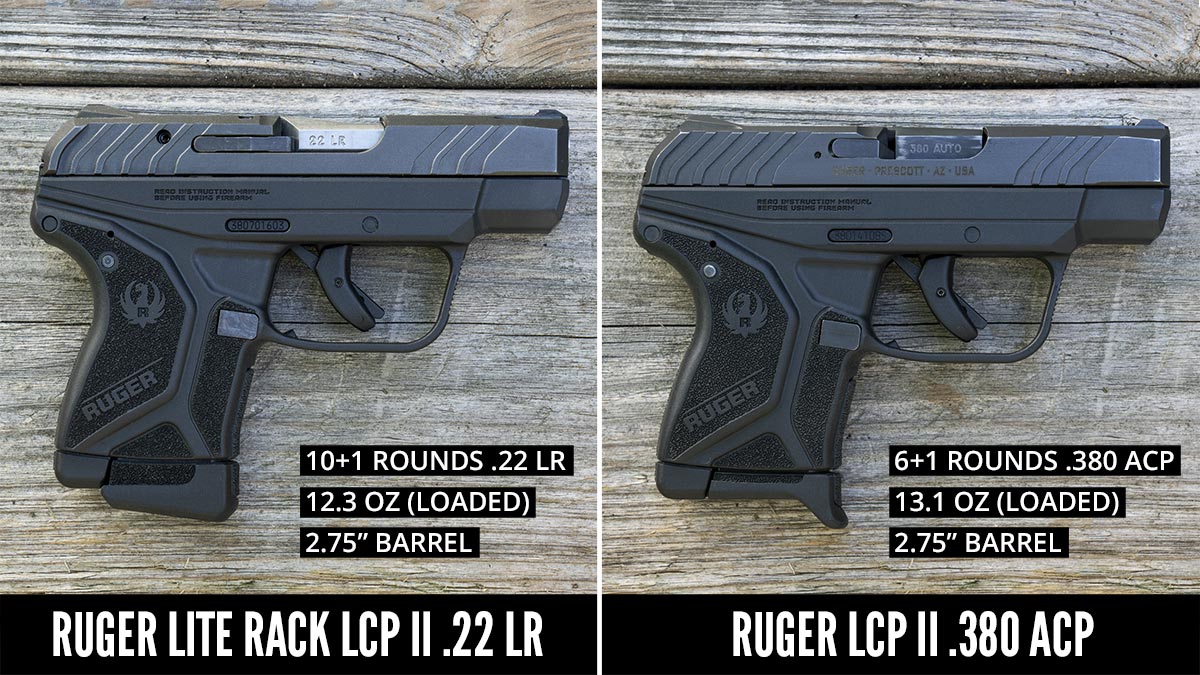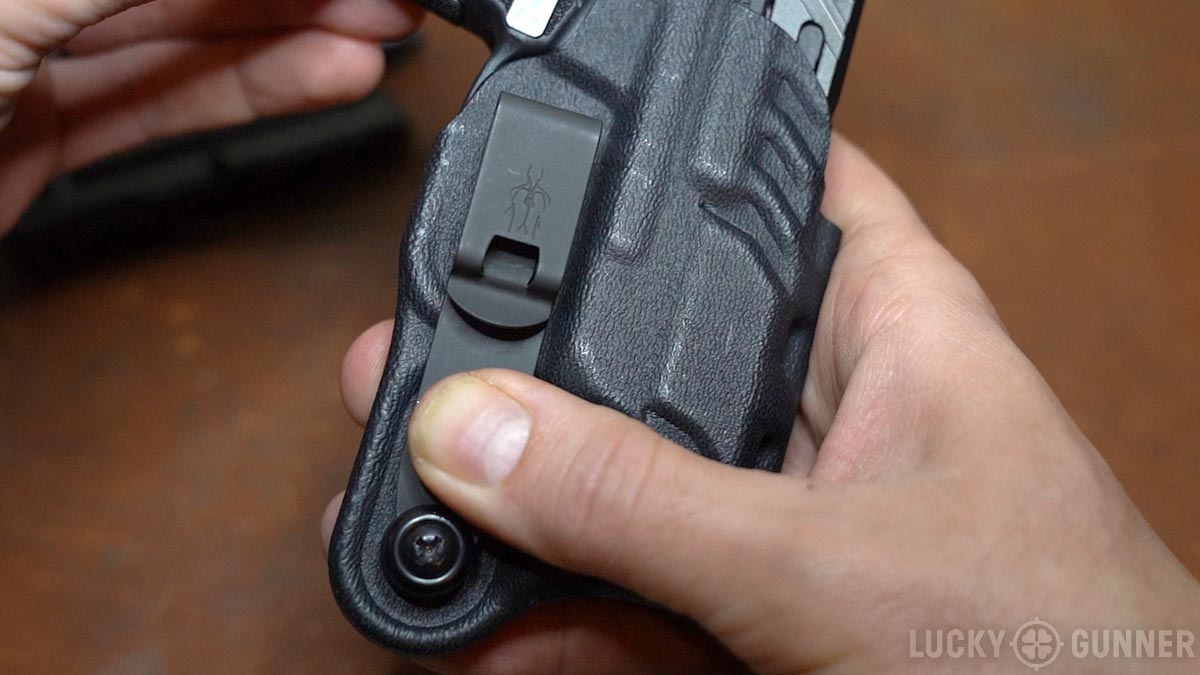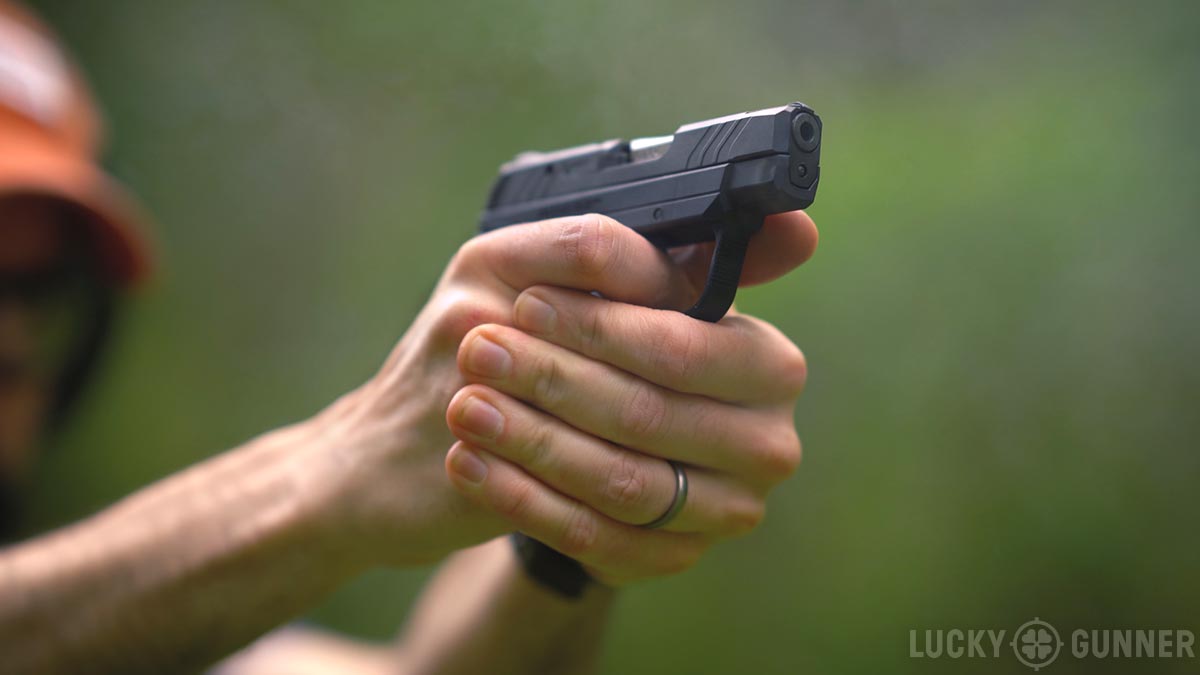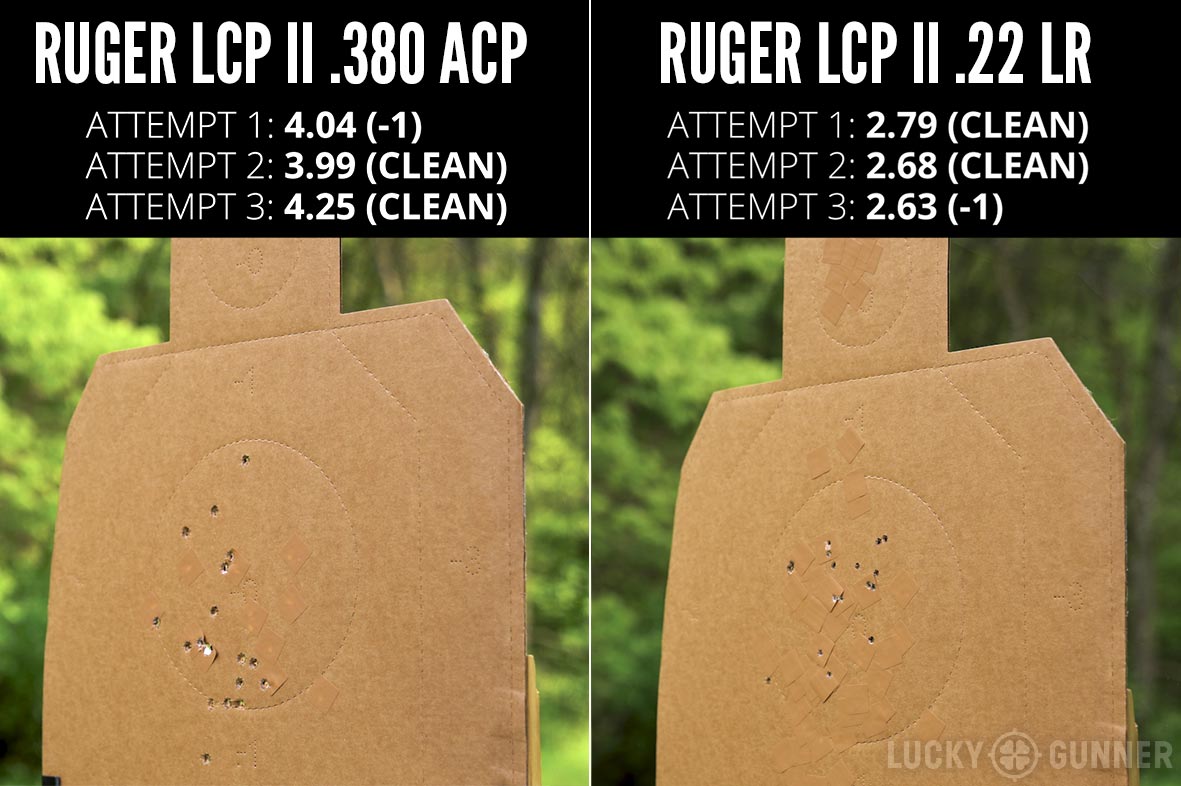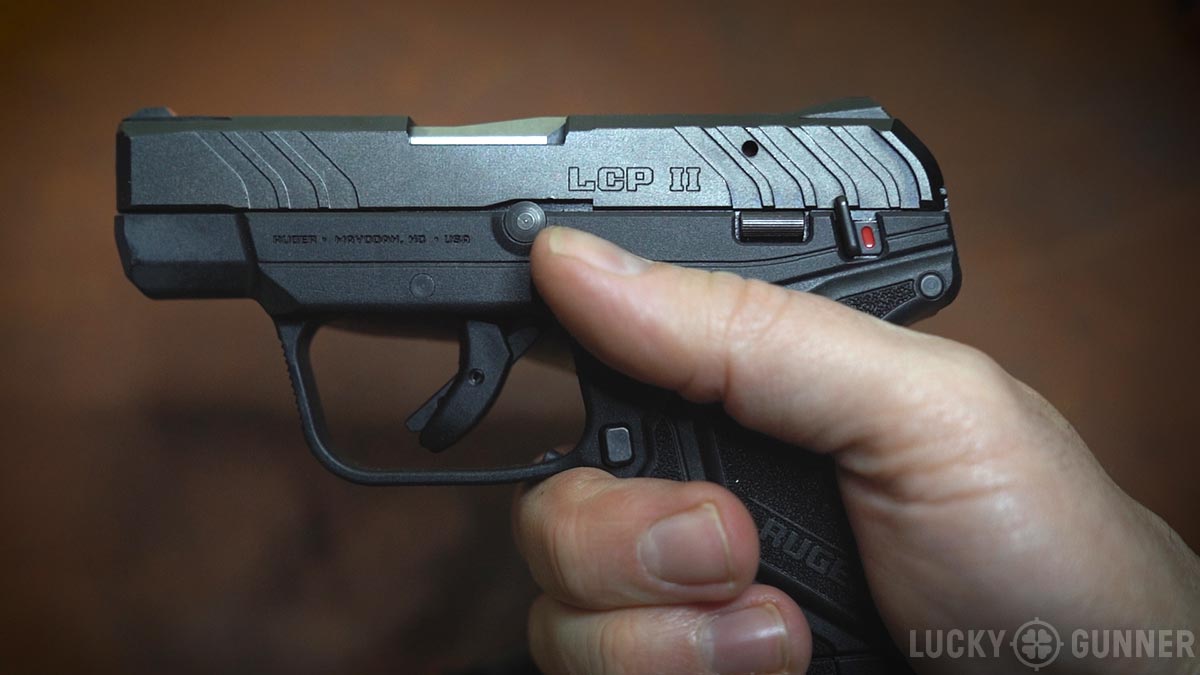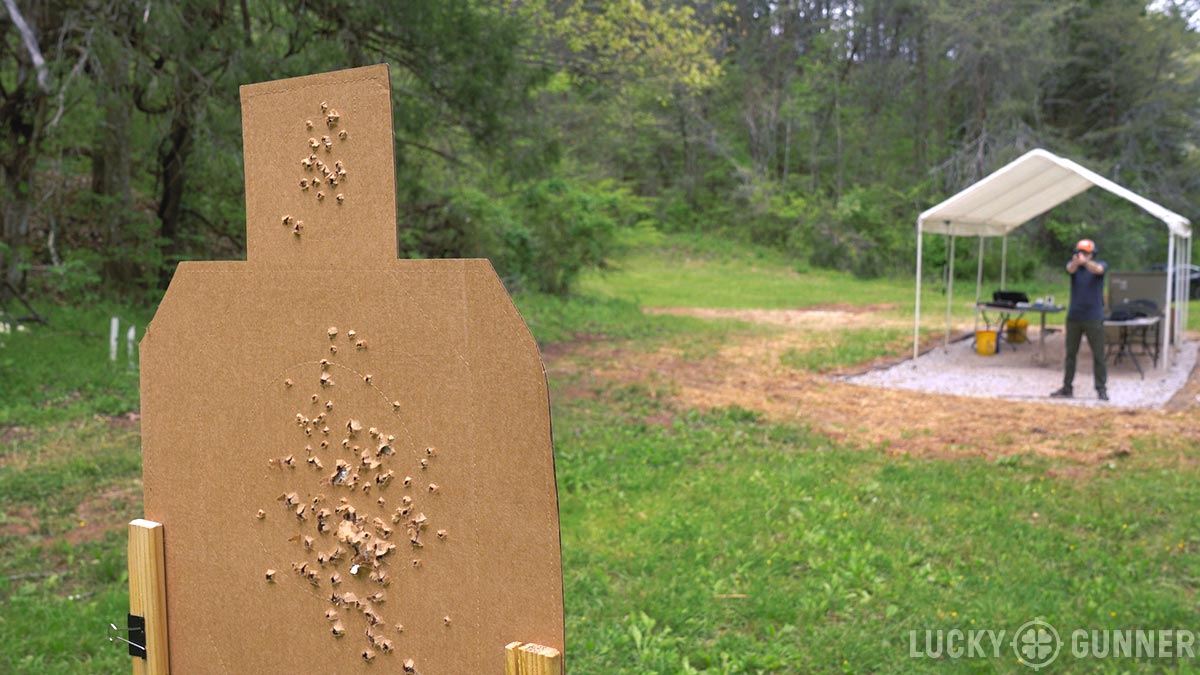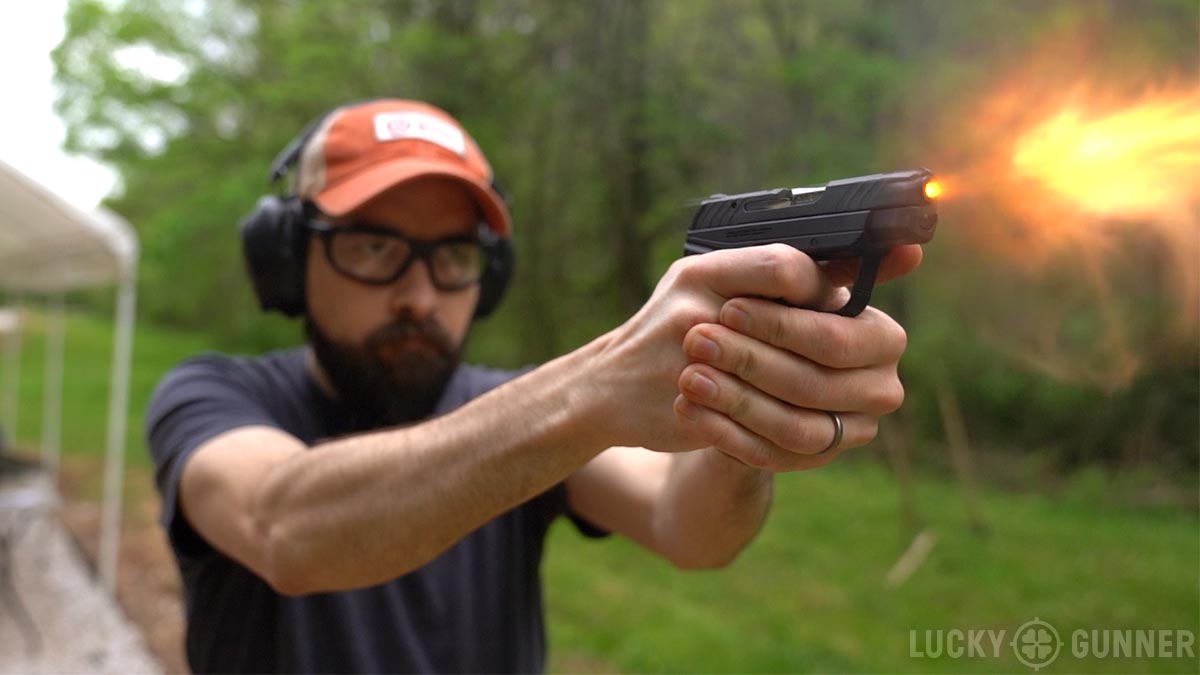Small guns are typically at their best when they’re chambered for small calibers. So it was kind of a no-brainer for Ruger to finally make a .22LR version of their wildly popular LCP. Today, I’m looking into why this is such a great idea and whether Ruger’s execution of that idea is equally great in this Ruger LCP II review.
Watch the details in the video below, or scroll down to read the full transcript.
At the very end of last year, Ruger introduced a new version of the LCP chambered in .22 LR. Officially, it’s called the Lite Rack LCP II.
If you followed my Pocket Pistol Series then it’s no surprise that I think this is a really great idea. Ruger’s marketing for this gun seems to be taking the approach that you should use the .22 LCP as a training gun for your .380 LCP. Well, maybe, but I think when we get into the realm of 12-ounce pocket pistols carried for self-defense, something chambered in .22 makes a lot of sense. But I’ll get back to that in a minute. First, let’s look at the basic specs for this gun.
Ruger LCP .22LR: Basic Specs
On paper, it’s really not much different from the .380 LCP II. It’s got a 2.75-inch barrel. It’s a little bit heavier than the .380, but when it’s fully loaded, it’s actually lighter at 12.3 ounces. The magazine capacity is 10 rounds of .22 Long Rifle. The .380 is only 6+1. The mag does stick out the bottom of the grip a little, but it’s really not any longer than the finger extension on the .380 LCP.
The very back of the slide has these little fins that are just a tiny bit wider than the rest of the slide. It makes it a little bit easier to get a grip on the slide when you’re racking it, which is where they get the name Lite Rack.
Otherwise, these two guns are basically the same. They’re both single action only with a lot of takeup in the trigger and a somewhat heavy break. They’ve got the same grip texture, same black fixed sights — which are actually pretty good as far as pocket pistol sights go. They’re a decent size and they have a snag-free profile. Like always, I’ve painted the front orange on both of them.
There is one other difference, actually. The .22 LCP comes with a manual safety lever. It’s over here on the left side of the frame only. The rear position is safe and you press it forward to fire.
Ruger LCP .22LR vs. Other .22 Pocket Pistols
Most pistols being made today in this size class are chambered for .380. Almost all of them, actually. Back when I did my video on The Best .22 LR Handguns for Concealed Carry, I mentioned that there are only two truly pocket-sized .22 Long Rifle semi-autos in current production: the Beretta 21A Bobcat and the Taurus PT-22. The Taurus doesn’t deserve a second look but the Beretta — I actually really dig this gun.
It’s a DA/SA, which is my favorite type of action, even though the double action is pretty heavy. It’s got the tip up barrel –I mean come on, who doesn’t love that? Beretta is coming out with a threaded barrel version this year and I plan to be first in line. I’ll stick a set of lasergrips on it and a can and blast tree rats in my backyard all day. But would I carry a 21A? Probably not. The sights are lousy. And the grips on this thing are just massive. It’s almost the width of two LCPs. And you only get seven rounds in the mag instead of ten.
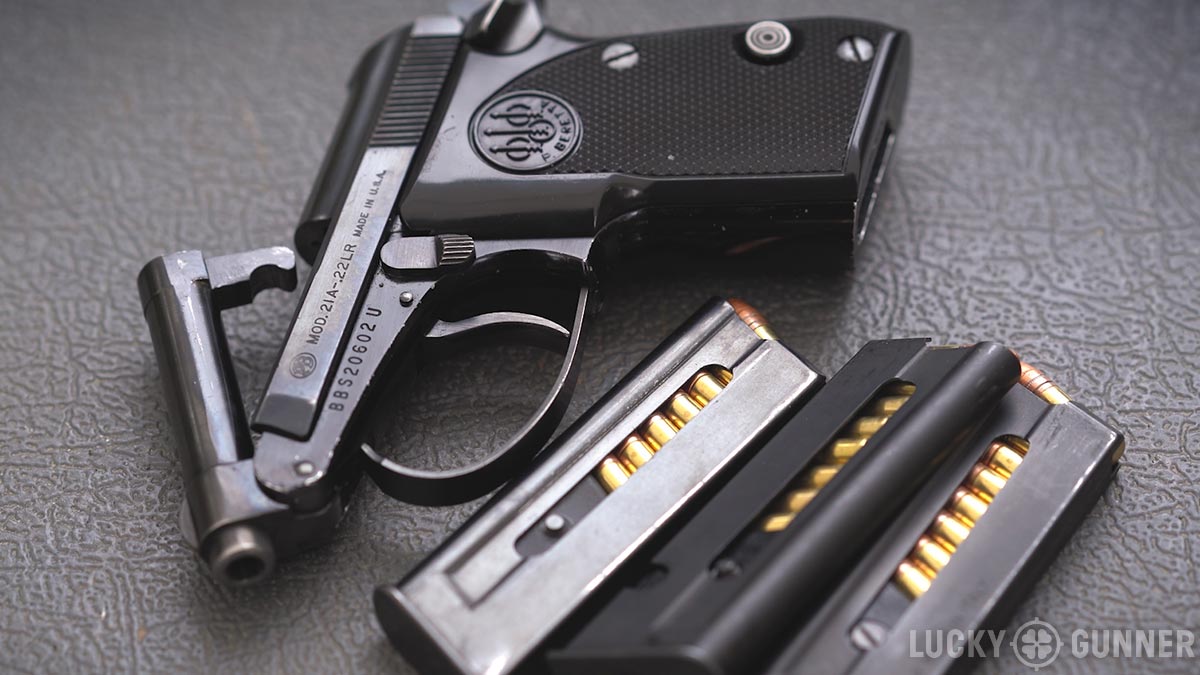
So, as far as I’m concerned, the LCP easily wins the title for the best itty bitty .22 pocket pistol. For the person who is new to concealed carry or who doesn’t necessarily want shooting to be their new hobby, a gun of this size doesn’t require any serious changes to their wardrobe or lifestyle. And they can practice with it occasionally without feeling intimidated. For more experienced shooters, the LCP .22 is the perfect candidate to fill that role of the underwear gun. That’s the gun you have on you when you can’t or don’t want to carry around a real gun.
Concealed Carry Without a Belt
This is a good place for me to throw in a plug for Discreet Carry Concepts. They make these low profile metal clips that can replace the clips your holster came with. (And no, I’m not being paid to say this, I just think this is a really good product that could be a real game changer for a lot of people.)
Some of my friends have been raving about these for a long time and I finally just got around to trying them out myself and I’m totally sold. The clips have an incredible amount of clamping force and that means you can attach them to your waistband without a belt and they won’t come off. So even with just gym shorts, sweat pants, yoga pants, swim trunks, or whatever — you can clip on a holster and it’ll stay put.
Now, I’m not saying your pants are going to necessarily stay up if the gun is too heavy. But if you draw the gun, the holster is not going to come out with it. This holster is a Desantis Slim-Tuk — it’s a pretty unremarkable holster on its own, but with this clip, it’s something I wouldn’t mind using on a daily basis. I know there is another product that supposedly accomplishes the same thing called the UltiClip, but after trying both, I have found the DCC clips to be far superior.
.22LR For Self-Defense?
Okay, so back to the LCP .22. The objections to carrying a gun like this are so loud, I can hear them already. “But Chris,” some of you are going to say, “trusting your life to a .22 is for old ladies and morons. You’re going to get people killed with this advice!”
I have already gone over, at great length, the merits of .22 as a self-defense cartridge in other videos, so I’m not going to rehash all of that now. For our discussion about the LCP, I’ll just bring up two relevant points. First, .22 is really not all that bad ballistically, especially when you compare it to other small pistol calibers like .380. Even looking at reports from real-world shootings, a few rounds of .22 into some important body parts tends to make a compelling argument. Would I rather depend on a high quality expanding 9mm hollow point? Of course, but they don’t make a 9mm this small and if they did, I wouldn’t want to shoot it.
Performance: LCP .22 LR vs. .380 ACP
The second point is that most people really suck at shooting pocket .380s. And people who can shoot them reasonably well can shoot a .22 much, much better. In the context of a carry gun, shooting it well means you can draw the gun and get two or more high center chest hits in a short amount of time.
To really drive home the point, let’s take a look at the Bill Drill. That’s where you draw and fire six shots into the center of an IDPA or USPSA cardboard silhouette at 7 yards. Now, for me, on a good day with a full size 9mm, I can clean this drill in about 2.3-ish seconds. That’s fairly respectable but it’s not going to win me any awards. Obviously, I’m going to be a bit slower on the draw with the LCP because it’s smaller and harder to grab onto and the sights are harder to see. But let’s see what I can do with the .380 LCP and an appendix style holster.
The Bill Drill
After I got warmed up with a few mags, I tried the Bill Drill three times. I dropped a shot on this first run with a time 4.04 seconds. On my second try, I cleaned it at 3.99 seconds. My draw time is consistently right at 1.5 seconds. My third run was clean at 4.25 seconds. That’s about as fast as I can go with this gun and be reasonably sure that I’m going to hit what I’m aiming at.
Now let’s take a look at how I did with the .22 LCP. Same draw speed, right around 1.5 seconds but a much faster overall time. 2.79 seconds on this first run. My second run was a little faster at 2.68 seconds. And on my third run, I threw the last shot just outside the circle with a time of 2.63 seconds.
Comparing the two guns, if you do the math, I’m about 50% slower with the .380 than I am with the .22. And that all comes down to the split times — the time in between shots.
Recoil Control
Okay, so the .22 is faster. Big deal. You probably didn’t need a demonstration to tell you that. And no, I don’t believe those slightly longer split times are likely to mean the difference between winning and losing a deadly force encounter. Those numbers are a direct reflection of just how much more effort is required to run the .380.
My grip has to be pretty much perfect if I want to adequately control that gun. I have to consciously think about trigger control. With all that muzzle rise, I have to really verify that my sights are back on target after every shot. And of course, this gun is really not enjoyable to shoot. It’s not a pistol I would voluntarily put a lot of rounds through if I wasn’t doing this review. Unfortunately, if I don’t practice with this gun for a few weeks, I need to fire at least a full box of ammo to get re-acclimated to it before I can shoot anything like what I did in those Bill Drills.
So where does that leave the average LCP owner who most likely practices almost never? The .22 version of this gun starts looking pretty good. Because the recoil is negligible, it requires very little effort to achieve and maintain a decent level of competency with a .22. And of course with the low cost of .22 ammo, you can get in a ton of practice even on a very modest budget.
Ruger LCP .22LR as a Training Pistol
Another option would be to use the .22 as a training aid and carry the .380. That sounds great in theory, but in reality, I don’t think it’s all that helpful. When you boil it down, the hardest part of shooting a pocket .380 is effective recoil management and that’s the one thing you cannot practice with a .22 training pistol. If you spend a day at the range with the .22 and then try to shoot the .380, you are likely to find that the way you’ve been gripping the gun for the last however many hundreds of rounds is woefully inadequate for controlling the .380. That’s why I’m inclined to recommend people just skip the .380 all together and carry the .22.
But I’m not quite ready to do that without some reservations. I’ve had a few issues with this gun. Three of them in particular. The first two are relatively minor and the third one is kind of a big deal.
Sight Misalignment
First, the sights were way off. Even at just seven yards, the best ammo I tried was shooting a couple of inches high and left. Out to 15 and 25 yards, it was off by more like five to seven inches. The elevation changed a lot depending on the ammo, but every load was shooting left a few inches.
For most people, if this is happening with your gun, the easiest solution is going to be to just get a Crimson Trace laser guard. They’re not a bad addition to these small guns anyway, and you can just align the laser to wherever your ammo is hitting.
I decided to take the riskier path and I filed down the right side of the front sight just a few thousands of an inch. Then I retouched it with some Birchwood Casey Aluminum Black. That pretty much took care of the windage problem. I could file down the rear sights to fix the elevation but I probably won’t do that until I’ve had a chance to figure out for sure what kind of ammo runs best in this gun.
Manual Safety Manipulation
My second problem is the manual safety. Not the fact that it has one, but the design of that safety. It slides forward and back instead of up and down like most handgun safeties. That, in itself, is not too difficult to get used to. It’s easy enough to ignore if you don’t want to use it, and that’s pretty much what you’ll have to do if you’re left handed since it’s a non-ambi safety.
The issue I’ve had is that it’s really easy to accidentally engage the safety when I’m racking the slide. Not so much when I’m loading the gun, but if I’m doing a malfunction clearance drill and trying to grab the slide quickly. So I decided to try the slingshot method to rack the slide instead of the overhand technique. Same thing: I kept grabbing the safety along with the slide.
So what I’ve settled on for now is rolling the gun over 90 degrees and grabbing the front of the slide so my hand doesn’t come anywhere near the safety. I’m not sure I can always remember to do that, and it would be ideal if the safety had a different design, or wasn’t there at all.
Mechanical Reliability
Actually, what would be ideal is if I didn’t have to worry about clearing malfunctions to begin with, and that’s the third problem I’ve had with this gun. This particular .22 LCP has not been super reliable.
And I know that a lot of you are feeling vindicated right now because I, conveniently, did not mention reliability when I was making my case for a .22 carry gun a minute ago. And that’s totally fair. The reason .22 LR has not been widely embraced as a self-defense cartridge probably has as much to do with questionable reliability as it does terminal ballistics.
I do think the ammunition has come a long way over the years and there are some guns that can run .22 very reliably. Some of you might remember the test I did with a Smith & Wesson 15-22 where I fired 1500 rounds in a day with no failures to speak of. My M&P 22 Compact has been extremely reliable for thousands of rounds. But I haven’t had the same kind of luck with the LCP.
I had a handful of failures to feed in the first 200 rounds, but those seem to have gone away. Right now, I’ve got roughly 800 rounds through the gun and I’m still having a problem with failures to fire. I’ve counted a total of 19 light primer strikes across five different types of ammo. It doesn’t seem to like the loose packed bulk ammo, but that’s no surprise. However, most of the light strikes have been with CCI Mini-Mags.
I’ve had really good luck with Federal Gold Medal Target lead round nose. I’ve shot about 300 rounds of that. I also haven’t had any problems with 70 rounds of CCI Velocitors.
Other Range Reports
Now, that’s just one gun out of the thousands that Ruger has made and I don’t think these problems are necessarily typical. A few of my friends also bought LCP .22s and have been trying them out. Two of those friends even bought a pair of them. So not including this one, that’s six LCPs.
They have fired something in the neighborhood of 3 to 4000 rounds across those six guns. So far, some of the other guns have had failures to fire, but very few. And the majority of those were with the cheap bulk pack ammo.
So it seems like this LCP is probably an outlier. But it also might be the case that all of the LCP .22s could benefit from a slightly stronger hammer spring.
LCP .22LR: Still In the Beta Testing Phase
Even though I really want to like it, I’m reluctant to recommend this as a carry gun, especially for inexperienced shooters. They aren’t likely to vet the gun thoroughly and might not know how to diagnose potential malfunctions. If you’re interested in the LCP .22, the best thing to do might be to just wait a little while. It’s a brand new model and teething issues like these are not uncommon. I wouldn’t be surprised if Ruger made some minor tweaks to the design over the next year so in order to iron out some of these issues
If we’re really lucky, they’ll roll out a version in .32 ACP and we’ll get reduced recoil with centerfire reliability. But I’m not holding my breath on that one. In the meantime, I will probably send this gun back to Ruger to see if they can get it running a little better. If you’ve got some rounds through a .22 caliber LCP II, let us know in the comments how it’s been working for you.
